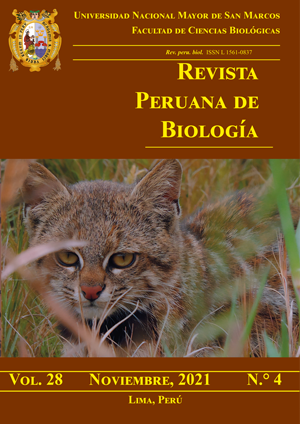New records of Holochilus chacarius (Rodentia, Cricetidae) in the Carcarañá river basin (Santa Fé province, Argentina) and biogeographical considerations
DOI:
https://doi.org/10.15381/rpb.v28i4.21007Keywords:
Holochilus chacarius, Tyto furcada, distribution, Santa FeAbstract
The collection and analysis of pellets is an adequate method in the study of small prey, because it allows the study of large areas, generates a large number and variety of individuals per lot. The order Strigiformes has the largest number of studies on the diet of birds of prey worldwide, highlighting those referring to Tyto furcata with a large number of contributions on the analysis of its regurgitates. The study of the regurgitations of this species has helped to make new interpretations about the distribution, taxonomy, and conservation of many species of rodents. Here, the presence of Holochilus chacarius is described in the south of the province of Santa Fe from the collection and analysis of pellets of the Barn Owl (Tyto furcata). These records expand the distribution of H. chacarius in the province and contribute to updating the existing distribution maps.
Downloads
Downloads
Published
Issue
Section
License
Copyright (c) 2021 Nicolas Chimento, Pablo G Rimoldi

This work is licensed under a Creative Commons Attribution 4.0 International License.
AUTHORS RETAIN THEIR RIGHTS:
a. Authors retain their trade mark rights and patent, and also on any process or procedure described in the article.
b. Authors retain their right to share, copy, distribute, perform and publicly communicate their article (eg, to place their article in an institutional repository or publish it in a book), with an acknowledgment of its initial publication in the Revista Peruana de Biologia.
c. Authors retain theirs right to make a subsequent publication of their work, to use the article or any part thereof (eg a compilation of his papers, lecture notes, thesis, or a book), always indicating its initial publication in the Revista Peruana de Biologia (the originator of the work, journal, volume, number and date).






